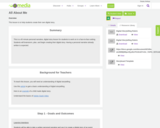
This lesson is to help students create their own digital story.
- Subject:
- Career and Technical Education
- Elementary English Language Arts
- Literature
- Material Type:
- Activity/Lab
- Author:
- Libby
- Date Added:
- 06/04/2021

This lesson is to help students create their own digital story.
Students will explore the difference between wants and needs as they decide what they will be taking to Grandma's house.
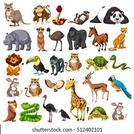
In this lesson, students will research the physical characteristics, adaptations, and habitat of an animal and share their findings through a question-and-answer (interview) session with the animal that will be presented using a PowerPoint presentation. Following their research, students will write a script they will use to narrate their presentation. Images, text, animation/transition of slides will be evaluated along with the content and the writing mechanics. This is a face-to-face format but could be virtual/distance learning.

In this American Symbols unit, students will learn information about American symbols. Students will learn about various American Symbols such as the American Flag, the Liberty Bell, the Statue of Liberty, the Bald Eagle, and the White House. Students should then be able to draw a picture and write one fact about an American symbol. American Flag © 2024 by LeAnn Schmidt is licensed under CC BY-NC-SA 4.0
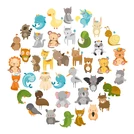
This is a lesson plan to introduce research and writing informational text based on this research.Example of openly licensed Citation: "Animals - Cute Zoo" by Lesya Skripack from Russia is licensed under FreePik. Image Created by: Lesya Skripack

Second grade students will be able to write informative/explanatory texts in which they introduce a topic, use facts and definitions to develop points, and provide a concluding statement or section.*All photos are my original photos.
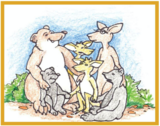
Students will use predicting, questioning, commenting, and connecting to the text as strategies while they read. They will also practice retelling the story to a partner to demonstrate comprehension. This detailed lesson plan is based on the "Bear and Deer" story booklet adapted by Merry Adams; Cultural Consultants: Genevieve Fields and Chrissandra Murphy. The Native American Indian Literacy Project was made possible by funds from the Utah State Office of Education (USOE). It is a joint effort of the USOE and San Juan School District Media Center. Lesson Plan Author: Patricia Helquist

To the Shoshone, the elders are their teachers, and the words of the elders are important truths for them. The elders have lived long lives, and their stories guide and protect the Shoshone. This Shoshone booklet is part of the Native American Indian Literacy Project storybook series for the six main Utah Tribal Nations. The project was led by Shirlee A. Silversmith, American Indian education specialist for the Utah State Office of Education. There are five stories per Tribe, with a total of 30 booklets, plus an ABC book. The set of Indian Tribal stories may be utilized by elementary classroom teachers to (1) develop an understanding and appreciation of Native American culture and societal contributions (2) provide a genre of text for the application of reading strategies, and (3) facilitate the mastery of various Utah Core Content Curriculum objectives. The Native American Indian Literacy Project was made possible by funds from the Utah State Office of Education (USOE). It is a joint effort of the USOE and San Juan School District Media Center.
The original set has 30 booklets, measuring 5.5” x 8.5” each, and illustrated by tribal members. The booklets were formatted to be printed and assembled. This version of the book has been updated to accommodate using a projector or smart board with pages appearing in order.

This is a Nearpod lesson for the Key Components of Myths that leads to writing a myth using these components
Ask the students general questions about inventions. Present the book "Pop! The Invention of Bubble Gum." Show the students other books about bubble gum. Generate enthusiasm for creating your own inventions. Make bubble gum from scratch using bubble gum making kit.
The use of multicultural versions of the story Cinderella helps students make comparisons and observations.
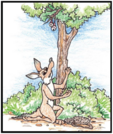
According to Goshute and Ute tradition, Coyote tales should only be told during the winter time. The tribes ask that the teacher use this lesson and story in the winter months. This lesson utilizes the Confederated Tribes of the Goshute (CTGR) tale, “Coyote Loses His Eyes” and the Ute Indian Tribe of the Uintah and Ouray Reservation (UIT) tale, “The Eye Juggler Coyote” to enhance comprehension skills and provide an introduction to comparing and contrasting plot, characters, theme and setting. The students will also be introduced to similarities and differences between the two tribes. Lastly, students will write a response summarizing using compare and contrast key words.Native peoples tell stories about Coyote and other animals to their children. Based on Coyote’s mistakes, the elders teach children about proper behavior and positive attitudes. The lessons taught help children to avoid making the same mistakes as Coyote and suffering the consequences in their own lives.
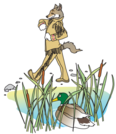
Coyote tales are part of the Paiute oral tradition used to teach proper behavior and values from an early age. These stories are only told during the winter time. The Coyote illustrates the mischievous nature in all of us. This lesson the Paiute tale, Coyote and Duck to enhance comprehension and prediction skills of students. It also helps students become familiar with cultural storytelling and its importance in Native cultures. Students will have a brief introduction to the Paiute Indian Tribe of Utah (PITU) and its location in Utah. The lesson includes a discussion about Native American regalia and explicitly addresses stereotypes.
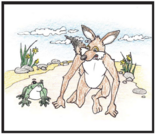
This is the detailed lesson plan to create a story map based on the "Coyote and Frog Race" Goshute story booklet adapted by LeeAnn Parker and Cultural Consultants Genevieve Fields and Chrissandra Murphy. This story should only read told or read during the winter months. The Native American Indian Literacy Project was made possible by funds from the Utah State Office of Education (USOE). It is a joint effort of the USOE and San Juan School District Media Center.Lesson Plan Author: Patricia Helquist
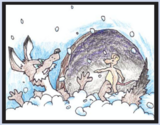
The students will write a story to activate their prior knowledge. They will then read a story and identify the characters, problems, and solutions within that story. After reading the story, the students will retell it in comic strip form. Possible extensions tie in with the Science Core. This concept map is based on the "Coyote and Mouse Make Snow" story booklet. According to Goshute tradition, Coyote tales should only be told during the wintertime. The Native American Indian Literacy Project was made possible by funds from the Utah State Office of Education (USOE). It is a joint effort of the USOE and San Juan School District Media Center.Lesson Plan Author: Patricia Helquist
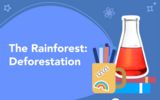
In this lesson, students will learn about the effects of deforestation and why people cut down trees. The will transfer the learned knowlede into a paragraph that includes a topic sentence, facts and details from the resources, and a concluding sentence.
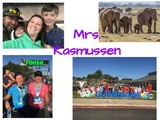
This lesson is designed for Kindergarten to create an online digital poster about themselves. It can be used for any grades, however, the standards I used are for Kindergarten.
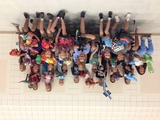
This lesson plan is a cumulative activity for SEED 4.1.1Construct an explanation from evidence that plants and animals have internal and external structures that function to support survival, growth, behavior, and reproduction.Students create and write about a unique creature with a focus on structures leading to its survival. Cover Image: Personal photo taken by lesson plan creator
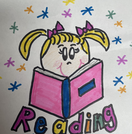
In this lesson, students will be asked to read a grade level appropriate story and make a digital storyboard that includes the basic elements of the story. These elements are: characters, setting, beginning, middle and end. They will illustrate the key elements of the story and use Apple Keynote to create and present a digital slideshow retelling of the story.

This is a lesson plan to teach students to digitize a story they have previously written using sequential words and describing thoughts, feelings, and actions.